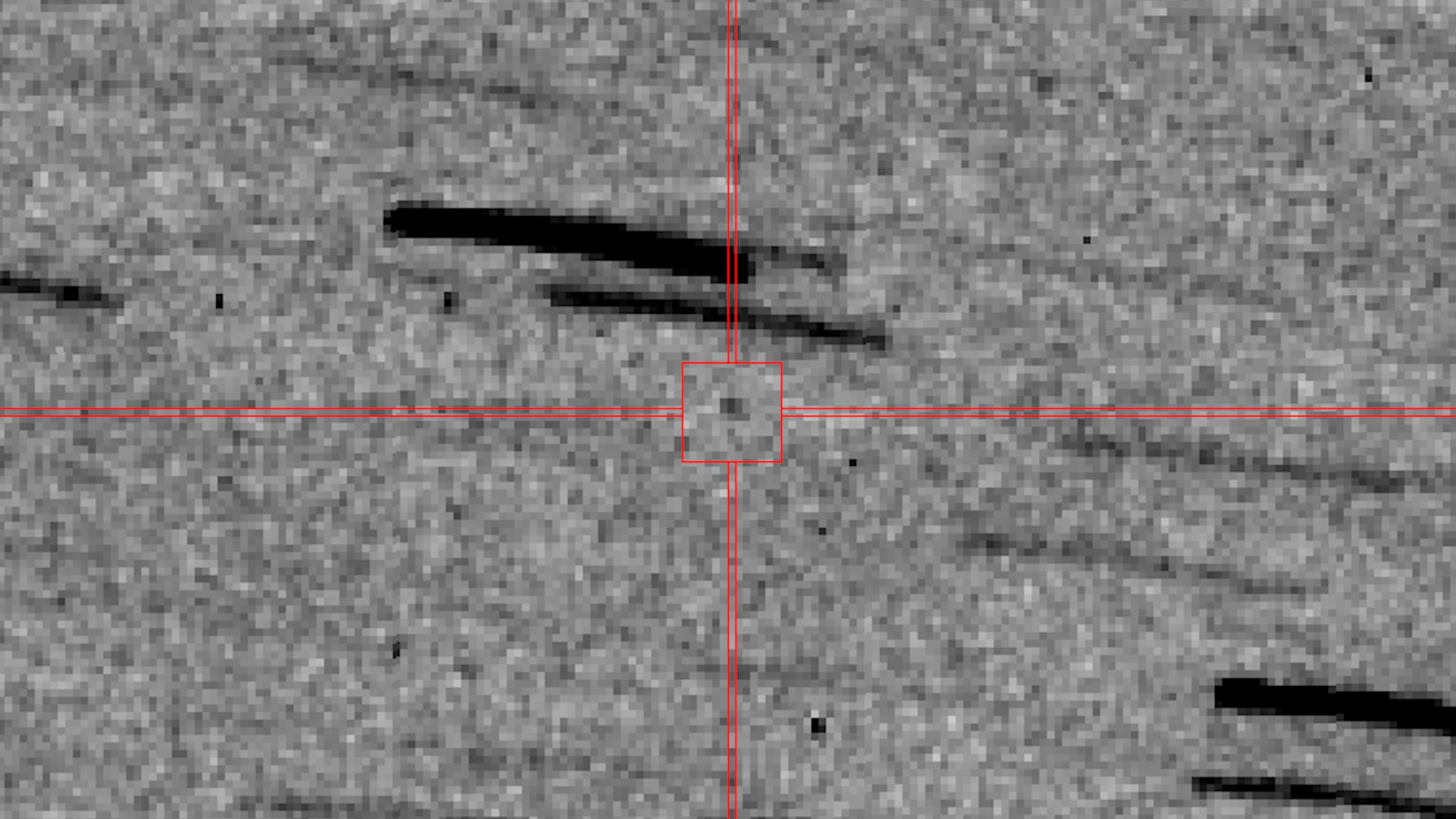Telescope spots NASA's OSIRIS-REx probe as it brings asteroid samples to Earth (photo)

We just got our first view of NASA's OSIRIS-REx probe carrying its asteroid sample toward Earth.
The European Space Agency's (ESA) Optical Ground Station telescope in the Canary Islands snapped a pixelated shot of OSIRIS-REx on Sept. 16, eight days before the spacecraft's sample capsule is scheduled to land in the Utah desert.
OSIRIS-REx was 2.9 million miles (4.66 million kilometers) from Earth when the photo was taken. So resolving the craft was quite a feat for the 3.3-foot-wide (1 meters) scope, which was originally built to track space junk and test laser-communication tech.
Related: How NASA's OSIRIS-REx will bring asteroid samples to Earth in 5 not-so-easy steps
"This image is a combination of 90 individual images, each 36-second exposures," ESA officials wrote in a statement on Thursday (Sept. 21).
"They have been combined in a way that takes into account the motion of the spacecraft, which is not traveling in a straight line, causing the seemingly stretched background stars to curve and warp," they added.
OSIRIS-REx launched in September 2016, on a mission to grab a sizable sample from the near-Earth asteroid Bennu and haul it back to Earth. The probe snagged about 8.8 ounces (250 grams) of material from the space rock in October 2020 and began the trek back toward its home planet seven months later.
Breaking space news, the latest updates on rocket launches, skywatching events and more!
That journey is almost over. If all goes according to plan, OSIRIS-REx will release its sample capsule at 6:42 a.m. EDT (1042 GMT) on Sunday (Sept. 24), and the hardware will touch down softly under parachutes a little more than four hours later.
The sample will then be transported to NASA's Johnson Space Center in Houston, which will curate the material and oversee its distribution to scientists around the world.
Those researchers will analyze the asteroid gravel in detail, to learn more about the solar system's early days and the role that carbon-rich asteroids like Bennu may have played in delivering life's building blocks to Earth billions of years ago.
It's just the sample capsule that's coming down to Earth on Sunday. The OSIRIS-REx spacecraft will keep on flying, all the way to the potentially hazardous asteroid Apophis. The probe will reach that second space rock in 2029, and take its measure on an extended mission known as OSIRIS-APEX.

Michael Wall is a Senior Space Writer with Space.com and joined the team in 2010. He primarily covers exoplanets, spaceflight and military space, but has been known to dabble in the space art beat. His book about the search for alien life, "Out There," was published on Nov. 13, 2018. Before becoming a science writer, Michael worked as a herpetologist and wildlife biologist. He has a Ph.D. in evolutionary biology from the University of Sydney, Australia, a bachelor's degree from the University of Arizona, and a graduate certificate in science writing from the University of California, Santa Cruz. To find out what his latest project is, you can follow Michael on Twitter.
